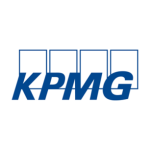Integrate several taxes into one single filing
In an effort to lower both tax authority and taxpayer administrative burdens, China’s State Taxation Administration (STA) has introduced a streamlined tax filings approach.
This is in line with the new tax administration reform plan announced in March 2021, and includes:
From June 1 2021, 10 taxes can be integrated into one single tax return for filing purposes. These include urban land use tax, property tax, vehicle and vessel tax, stamp duty, farmland occupation tax, resource tax, land appreciation tax, deed tax, environmental protection tax, and tobacco tax. Prior to the nationwide roll-out, this consolidated filing approach had been piloted in some provinces in China.
From May 1 2021, a simplified filing approach for urban maintenance and construction tax, education surcharge and local education surcharge (‘additional taxes’) will go into effect. In China, where a company needs to pay VAT and/or consumption tax (CT) in a given month, these additional taxes will also be imposed based on the VAT and/or CT payable amount. Previously, these additional taxes must be filed separately, but now these can be filed together with CT/VAT in one single tax return. It is expected that this simplified filing approach would be extended to nationwide in due course within 2021.
Relax filing requirements for cross-border payments
On April 26 2021, the China State Administration of Foreign Exchange (SAFE) and STA jointly issued a draft announcement setting out measures to ease the existing filing requirements for payments (such as dividends, interest, royalties) remitted outside of China. Public comments on the draft announcement can be made up to May 26 2021.
The existing filing requirements were initially announced in 2013 and most recently modified to reflect the state and local tax bureau merger in 2018. They require companies and individuals to make filing with their in-charge tax bureaus where making outbound remittance in excess of $50,000.
The Chinese government now intends to improve the filing procedures by providing a number of enhanced measures, including:
Filing is solely required for the initial payment where multiple payments are to be made under a contract. Under current practices, filing is required for each payment;
Scope of filing exemption extended. Where foreign investors re-invest in China by using funds derived from a direct investment in China, then the filing can be exempted; and
New filing approach is available. In addition to on-site filing, taxpayers may also opt to make the filing online.
Tax measures to support high-tech sectors and innovation
Pursuant to new goals on innovation-driven development set out in China’s 14th Five-Year Plan (i.e. 2021 to 2025), the Chinese government authorities recently announced a string of import tax incentives for high-tech sectors such as integrated circuit (IC), software and new-type display manufacturers, as well for enterprises engaged in scientific and technological innovation. These include:
A 10-year import duty exemption is available for eligible imports made by IC and software enterprises as well as for new-type display manufacturers. In parallel, for import VAT incurred on eligible new equipment, by an enterprise undertaking significant IC or new-type display production projects, a six-year instalment payment arrangement can be used. These incentives are effective from July 27 2020 to December 31 2030. As it is still difficult to get VAT refunds in China, and excess input VAT must otherwise be carried forward for offset against output VAT, such staggering of VAT payments on substantial outlays is of significant utility.
To support innovation, new import duty, VAT and CT exemptions will apply to importation of equipment and materials by scientific research institutions, technical development institutions, universities and libraries. This is provided that such equipment and materials cannot be made in China or those made in China cannot meet the requirements for scientific research, technology development and education. The import VAT exemption also applies to books imported by scientific and research institutions and universities, as well as books imported by libraries for scientific research and education purposes. These incentives are effective from January 1 2021 to December 31 2025.
Further opening up of service sector
The service sector plays an important role in attracting foreign direct investment (FDI) to China. In Q1 of 2021, FDI in the service sector accounted for 78.6% of total FDI.
Subsequent to the designation of Beijing as a special service sector development zone, the Chinese government recently approved the service sector opening up in an additional four provinces and cities including Tianjin, Shanghai, Hainan and Chongqing. This is a three-year pilot programme, starting from April 9 2021.
Notable opening-up measures are:
Financial sector: Multinational enterprises (MNEs) may set up wholly foreign-owned enterprise (WFOE) finance companies in Shanghai and Chongqing. Removal of restrictions on oversea financing for ships and aircraft held by entities in Hainan;
Health care: Hong Kong SAR and Macau SAR service providers may set up WFOE medical institutions in Chongqing, Hainan and Tianjin. Taiwanese service providers may set up WFOE hospitals in Hainan;
Telecommunications: Further opening-up measures will be introduced for value-added telecom services in Shanghai; and
Commercial services: Relaxation of restriction on foreign professionals taking Chinese qualification exams.
While such supportive measures are being put in place for taxpayers and businesses, China’s tax administration are, in parallel, increasingly tightening their scrutiny of tax-avoidance arrangements. This includes use of (domestic or foreign) tax havens or ‘yin yang contracts’ (i.e. dual contracts for service income, particularly notable in entertainment sector).
There has been much media coverage of a case in which the Shenzhen tax authority collected RMB 52 million (approximately $8 million) in corporate income tax (CIT) from a Shenzhen-based company. The company was detected as having transferred certain income to a light-substance Horgos company (Xinjiang province in Western China) with a view to enjoy tax relief – the Horgos CIT rate is 15% while China’s standard rate is 25%.
There is an expectation that the rigour of tax enforcement, supported by big data tax risk assessment and audit target identification, will continue to increase.
Lewis Lu
Partner, KPMG China











